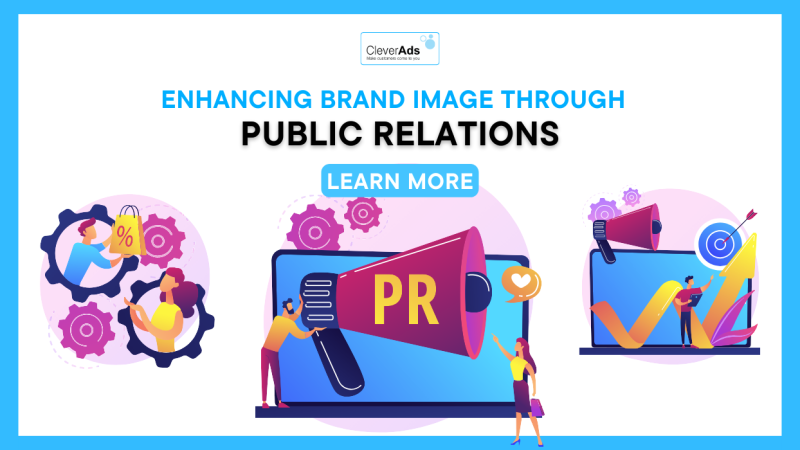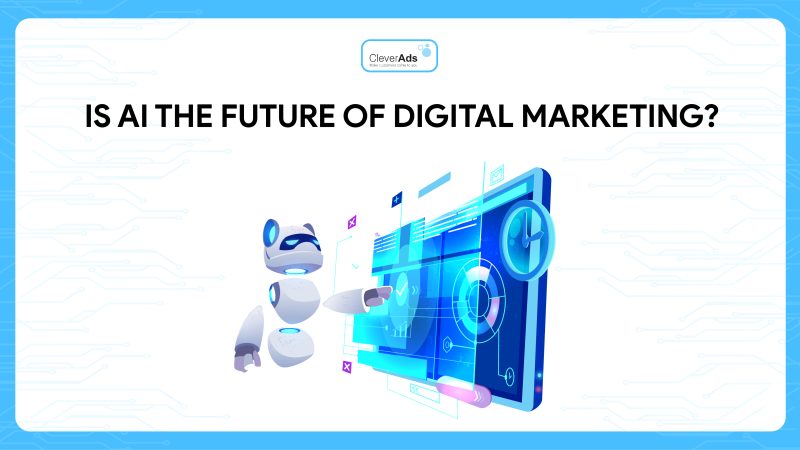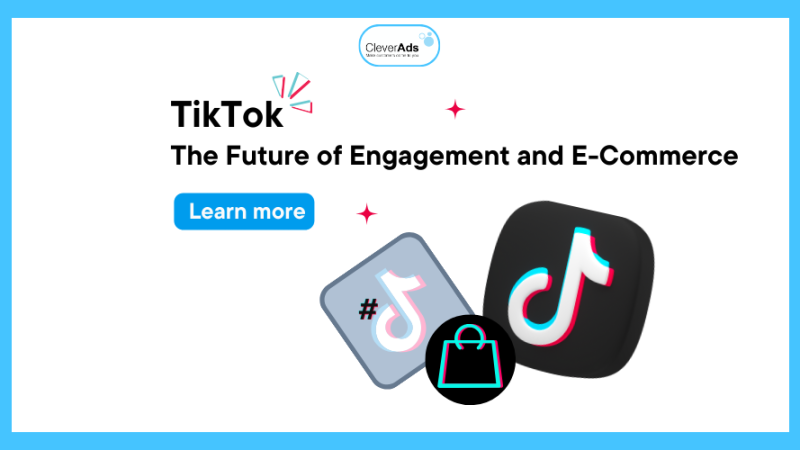Beauty Marketing Trend: What are the Best Choices for Enterprise?

The term ‘Beauty Marketing’ appears as a breath of fresh air in positioning and exploiting the potential of communication with beauty products to increase revenue for the category.
The following report will analyze industry trends, media channels, and several notes to have a successful beauty marketing campaign.
1. What is Beauty Marketing?
Beauty Marketing is a marketer’s job to promote a beauty product or brand to the public. This work is to create customer awareness with the brand; at the same time, motivate them to make purchases of beauty products.
The beauty industry has always attracted great attention from consumers.
Marketers in this field must have skills and acumen in the profession of fashion and beauty. On the same hand, they need to think about marketing strategies to hit consumers’ psychology of loving being cared for and becoming pretty.
2. Updated: Beauty Marketing trend
The Covid-19 pandemic has changed customers’ shopping behavior. When physical stores are closed and sales are reduced due to social distancing, it is the golden time for the e-commerce platform to take the throne. They direct customers into buying and selling activities through online channels.
Digital marketing is a potential growth trend of the beauty industry.
Participating in and promoting active digital promotions ensures attracting new audiences and increasing brand loyalty.
Unlike traditional marketing, digital marketing allows the collection and analysis of advertising success metrics and data to adjust marketing strategies.
Here are predictions about beauty marketing trends in the near future.
2.1. Omni channel
Omni channel marketing is an activity of marketing products and services of a brand through a unified shopping experience between channels, helping to provide high-quality, seamless, and convenient customer care when channels are connected together.
Omnichannel marketing is carried out using a variety of technological channels. Websites, apps, offline retail, digital advertising, social networks, online shopping, and other services are examples.
Beauty and cosmetics firms have to establish different channels due to the variety of services and goods. They offer a comprehensive and high-quality purchasing experience whether it is a mobile app, a physical store, or a social network.
Consumers are becoming more picky and demanding. They raise expectations for a more convenient, easier shopping experience.
Traditional and digital marketing is used by beauty brands to convey the same offer and positioning over three or more channels. Their purchases often climb by over 290%. Customer satisfaction reached 18%. In comparison, unilateral marketing operations generate 5%.
2.2. Micro-Influencer
In 2023, the tendency will extend to micro-influencers, who can help businesses maximize their potential.
Micro-Influencers are small influencers. The majority of micro-influencers have a passion or work in a certain industry.
Unlike Macro or Mega-Influencer, Micro-Influencer does not have a large following. They have between 10,000 and 100,000 followers on average.
Despite their limited audience, they have a high level of trust and engagement, as well as cheaper service costs.
According to statistics, micro-influencers have the ability to increase conversion rates by 20%.
Micro-Influencer helps increase awareness while maintaining the amount of interaction for the brand. They can focus on the right target audience of the business, providing a more authentic experience.
Brands are strongly embracing micro-influencer marketing to optimize expenses and business goals.
2.3. Beauty Marketing và Personalisation
Marketers may create and develop more tailored offers by collecting personal data.
Consumers tend to be bombarded with generic promotional products. It makes it impossible for them to tell the difference at first glance.
The report shows that up to 80% of consumers are likely to buy from brands that offer personalized offers and experiences.
The development of AI and Big Data has tremendously aided the process of gathering information and developing customized programs.
They assist beauty marketers in analyzing the personal features, behaviors, and interests of their customers. As a result, items that meet the needs of clients are provided.
Furthermore, personalizing the buying experience raises the average order value and lowers the return rate.
2.4. UGC – User Generated Content
UGC refers to any content made and posted on the Internet by users of a beauty brand. Videos, images, GIFs, memes, blog articles audio, and other media are included.
Consumers are becoming increasingly skeptical of brand advertising. They believe the opinions of people who have purchased identical things.
They are social media posts, featured articles by bloggers and journalists, reviews by KOLs/KOCs, and Instagram unboxing activities.
UGC offers branded content that beauty brands can ‘repost’ to boost virality.
However, marketers must deliver guidelines and call to action to inspire consumers to produce and post relevant data on their social media with mention of the brand as hashtag # or mention @.
2.5. AR – Augmented Reality
Covid-19 has altered purchasing habits and behaviors. Customers do not need to go to the store to try it on before purchasing.
Many well-known cosmetic businesses are utilizing augmented reality (AR) technology to enhance the real-world experience. The AR technique that is most used in beauty marketing is virtual try-on.
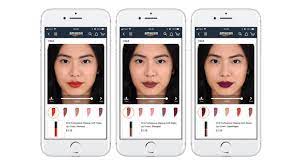
The app uses facial recognition algorithms to identify areas of the face and apply overlays of selected products to areas like eyes and lips, much like filters on Instagram.
Users can change color, style, and lighting with one touch. Many of these apps also have social media integrations. Users can share their looks with friends and family online.
2.6. Short Video Content
Short videos are currently trendy and preferred by KOLs/KOCs/Influencers on social media platforms such as TikTok, which has approximately 850 million subscribers, Instagram with Reels, and YouTube with Shorts.
Statistics show that 66% of customers prefer short movies to learn about new products and services.
3. Most used media in Beauty Marketing
The beauty marketing industry has a variety of communication channels to effectively reach out to target customers to increase conversion rates for businesses.
3.1. SEO (Search Engine Optimization)
SEO is a free tool to get the first rank on the Google search bar and get organic traffic. This is a great channel for beauty businesses that own websites and blogs.
Manufacturers, e-commerce channels, and service providers can create their own helpful content on their platforms to rank on Google’s front page without paying per click (PPC) or per ad impression.
3.2. Social Media Marketing
The beauty industry seems to be made for social links. They create content, build communities, and share beauty trends with their viewers.
According to studies, people spend approximately two and a half hours per day on social media.
Social Networking Trends in Beauty Marketing:
Create content to introduce new brands and goods. Places for beauty firms to collaborate with other brands, such as Influencers, to conduct promotions. Encourage UGC.
Customers can also shop straight on Instagram thanks to the Shopping function. TikTok, in particular, has recently emerged as a competitive area and platform in the cosmetics sector.
3.4. Content Marketing
Content marketing is a tactic to drive revenue through content creation; moreover, fully meets the needs and interests of potential customers. Building content helps engage audiences and leads to long-term partnerships.
It can be said that successful beauty marketing strategies cannot be without marketing. Because even the sequence of activities in email marketing is already the task of the content manager.
3.5. Brand Marketing
Target
Develop brand and product awareness. Increase brand credibility, expand market reach, and establish reputation.
Marketers seek out novel ways to advertise their products to set the company apart from its competition and show customers the company’s superior value.
In addition, building long-term relationships with consumers.
A strong plan can help a company stand out from the crowd and bring the company to the next level by attracting new customers and increasing revenue.
Omni channels are often implemented to increase efficiency for beauty industry businesses.
3.6. Paid Ads
Paid advertising helps track competitor actions. Determine where their adverts should be placed and perform test ad campaigns.
Paid Ads in beauty marketing assist firms in creating contextual ads, adding products to Google Shopping, engaging in dynamic remarketing and social media ads, and tracking the effectiveness of their advertising efforts.
This helps to know if the ads need to be optimized or not.
4. Highlighting notes for successful Beauty Marketing campaigns
4.1. Market research
Before conducting marketing campaigns for the beauty industry, businesses need to determine the needs of customers in the market by using the Google Keyword Planner tool to consider the most searched keywords and information related to the plan they are going to build.
4.2. Target customer research
Viewer research assists beauty companies in synthesizing people who are interested in brands, products, and promotions. When learning about them, beauty marketers should keep the following factors in mind:
- Habitat
- Gender/age
- Average income
- Interest
- The challenges in deciding on buying and selling activities
- Intention/wish
Conducting thorough potential customer research helps businesses create personalized and highly effective marketing campaigns in the use of communication channels.
4.3. Competitor research
This activity helps the beauty company understand the strengths and weaknesses of its competitors.
The more they understand the competition, the better beauty marketers can leverage their strengths and build a difference in the market.
4.4. Brand positioning
Trusted brands help to persuade buyers and establish lasting partnerships.
Beauty companies can develop distinct, differentiating selling propositions. They make lists of their customers’ pain points. Loyalty or incentive programs motivate customers to make recurring purchases.
Beauty marketing marketers can do the following:
- Create a clear connection with the brand
- Share helpful written content on social media sites or blogs
- Actively engage with your audience to build a loyal community
4.5. Set strategic objectives for the Beauty Marketing campaign
Goals should be established for one, two, or five years. The company’s development position will be immediately affected by vision.
They must create a week-by-week action plan and define intermediate goals. Achieving or failing to achieve will show the necessity for a plan revision.
4.6. Calculate the budget for the Beauty Marketing campaign
A good financial plan helps a beauty marketer predict the calculated budget for each channel, for the founder, and determine the expected profit.
Beauty marketing requires an integrated approach, constant tracking of trends, and innovative solutions to find their way into the hearts of customers.
5. Top Beauty Marketing Campaign
5.1. Lemonade: ‘Lemonade Want It Got It Dual Eyebrow’
- Background
Lemonade is a Vietnamese cosmetic brand developed by “Vietnamese Makeup Witch” Quach Anh. This is a makeup business that always promotes the beauty that each girl possesses: knowledge, optimistic thinking, and joyous energy.
That is the source of encouragement for the Lemonade ladies to effortlessly overcome obstacles and achieve new goals. “When life gives you lemons, make lemonade” is the company’s slogan.
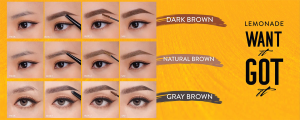
Lemonade’s 2-headed brow pencil was created in response to the needs of Vietnamese consumers who live in a tropical region with hot summers and dry winters. It is not permitted to remove and re-apply makeup in a filthy atmosphere with a lot of dust and working, and studying conditions all day.
This leads to the majority of Vietnamese consumers suffering from oily skin and cosmetic tone-down.
The conclusion of Vietnam market consumer insight on eyebrow pencils includes:
- Maximum waterproof
- The color lasts all-day
- Easy to use for beginners
- 2-in-1 product: both shaping the eyebrow shape, filling, and even coloring each hair
- Creative Idea
“LEMONADE WANT IT GOT IT DUAL EYEBROW – DOUBLE BRIDGE LENGTH FOR PERFECT BROWS”.
The campaign has the participation of Singer Dong Nhi reviewing products on Facebook. Influencers/KOLs/KOCs on TikTok like maianhh.dao, jimieggg, doitlikejulian, Duyentruongmakeup.
On posts, Lemonade also attaches purchase links from platforms. Posts on Facebook are sent shopping links to Website, Lazada, Shopee, and Tiki. Posts on TikTok are linked to the TikTok Shop.
- Content Marketing
Page Lemonade Cosmetics on Facebook with content aimed at “How to choose the right eyebrow style for your face”, “Which eyebrow pencil color is right for you?”, “Must have Items for Newbie” to increase interaction with the page. Thereby, increasing the conversion rate and creating reminders and repetitions of brand and product identity with potential customers.
- Results
The product achieved 62.3k sales, and 21.4k average 5-star reviews on Shopee. Thousands of views on Reel YouTube and the ‘Local Makeup Product of the Year’ award voted by ELLE Beauty Awards 2023.
5.2. Influencer Beauty Marketing Campaign of FOCALLURE
- Background
FOCALLURE is a Chinese cosmetics firm founded in the year 2020. The brand debuted in Vietnam in early 2021. This brand sells a wide range of items, including lipstick, eyeshadow, blush,…
They concentrate on product packaging, which is typically petite, delicate, and feminine. This brand is highly recommended by numerous beauty bloggers.

- Objectives
When entering the Vietnamese market, FOCALLURE intends to localize in order to get high recognition and expand market share in the beauty business, particularly among young people.
In terms of communication, the brand wishes to raise Brand Awareness. Which, social media reach climbed by 30%, the volume of mentions increased by 35-40%, sales in the Vietnam market increased by 25%, and the new orders/total orders ratio increased by 17%.
FOCALLURE is reasonably priced in comparison to the market. As a result, their target demographic is young people – primarily Generation Z with average income and spending patterns that tilt toward social networks.
FOCALLURE focuses on content creation, KOL selection, and campaign management using the Influencer Marketing Automation platform.
The four most popular platforms in Vietnam are YouTube, Facebook, Instagram, and TikTok.
On YouTube, KOLs and KOCs mostly focus on two topics. On Facebook, there is more content about cosmetic Swatch & Review.
- Results
YouTube REACH 700,000 views. Engagement rates are between 8 and 10% of views. 70% of feedback is positive and supportive of the product and brand. 10% of responses are neutral, curious, and want to know
5.3. Beauty Marketing Cocoon: Cocoon grapefruit essential oil hair conditioner
Cocoon is a Vietnamese vegan cosmetics company. They studied and created 100% vegan cosmetic products that retain the nutrients of Vietnamese plants. They prioritize safety and avoid utilizing animal-derived ingredients, specifically saying no to animal testing.
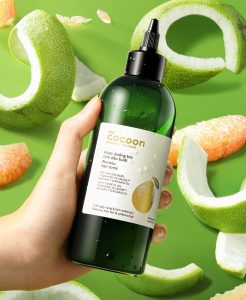
- Background
Lifestyle and routine are frequently demanding, tense, and irregular, resulting in hair loss. Many persons who have been infected with nCoV have lost their hair as a consequence of fear, exhaustion, and psychological issues, particularly during the pandemic.
Many people who live a green lifestyle, in particular, grow to appreciate vegan cosmetics because of the current social tendency toward plant-based items rather than animal-based products.
Cocoon’s goal is to boost skin health by utilizing the diversity of botanicals. Botanicals high in vitamins, antioxidants, and minerals are included.
They concentrate on scientific understanding in order to make safe and effective cosmetic products that will provide individuals with healthy, youthful, and brilliant hair using simple and friendly ingredients.
- About Business
They strive to distinguish themselves from major competitors such as L’Oreal, Innisfree, Thai Duong, and Hairburst. Simultaneously, it secured a market share of hair growth products in Vietnam.
- About Branding
Cocoon wants to achieve the trust and transparent brand positioning of Vietnamese businesses – produced in Vietnam, ingredients sourced in Vietnam.
- Campaign: Using social media in combination with criteria
Collaborative Marketing: Promote promotion and purchase through convenient e-commerce channels.
Content Marketing: Post “Indispensable warrior army for hair” “Effective and extremely economical hair loss care duo.” Guide “Treatment for hair loss and retardation”. Results “before-after” after using Grapefruit essential oil for hair care.
Influencer Marketing: Cooperating with famous beauty bloggers: Trinh Pham, Dao Ba Loc, Giang Oi, etc.
- Results
Received the “Local Brand of the Year” and “BLOGGERS’ CHOICE WINNER” awards at the ELLE Beauty Awards 2023. Reached 30.8k sales and 6k reviews on Shopee alone for the upgraded version product line.
6. Conclusion
Beauty marketing is growing more popular with content for product evaluation and introduction on social networking networks.
Many corporations have invested in the beauty industry. They add new hues to the marketing market as a whole.
We hope that the overview provided the readers with relevant information. Best wishes for your campaign!
